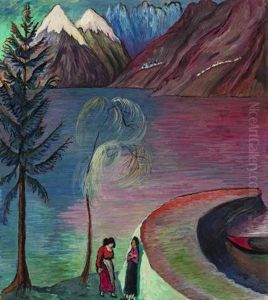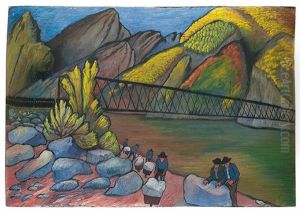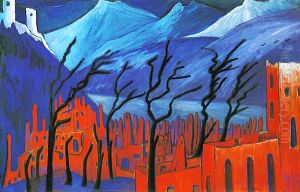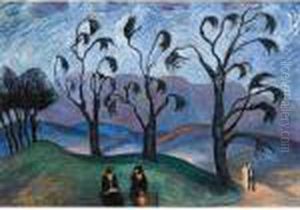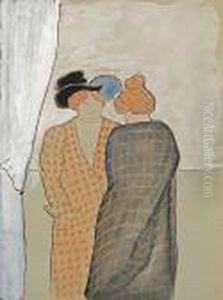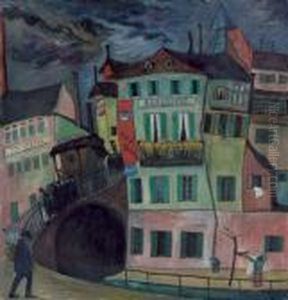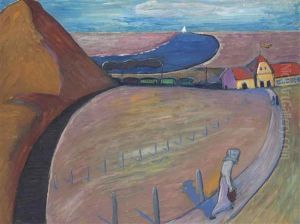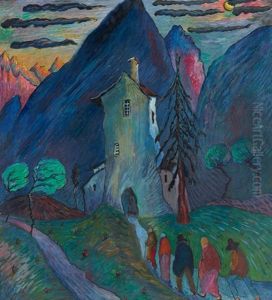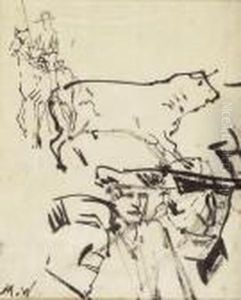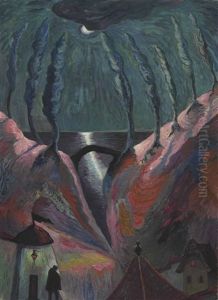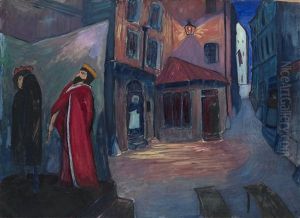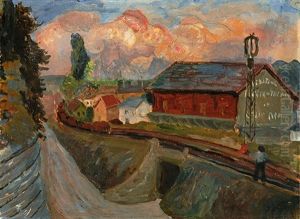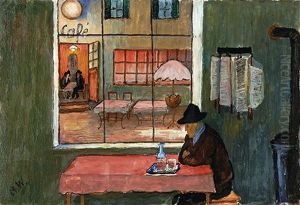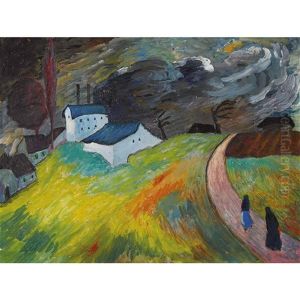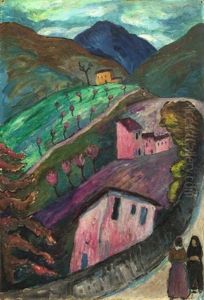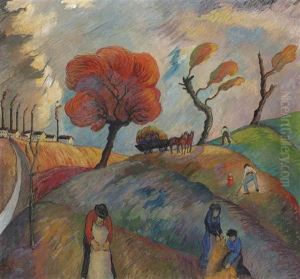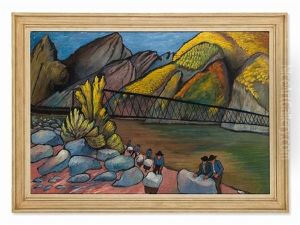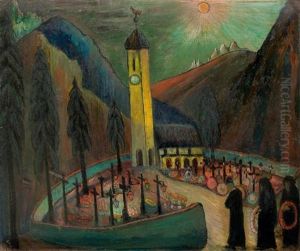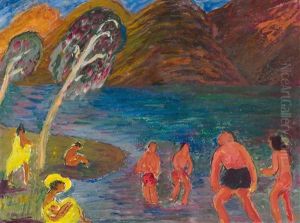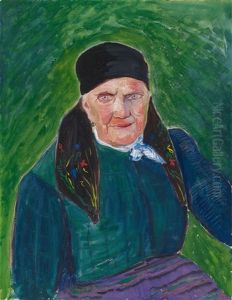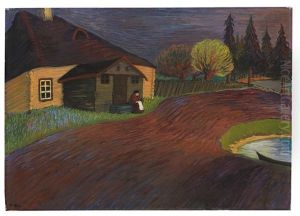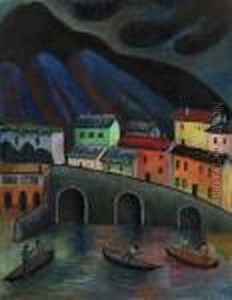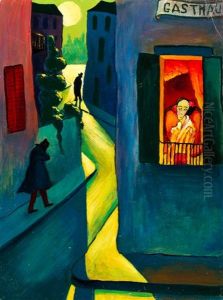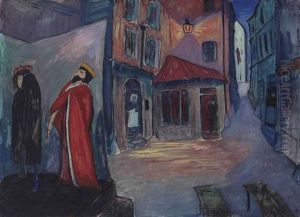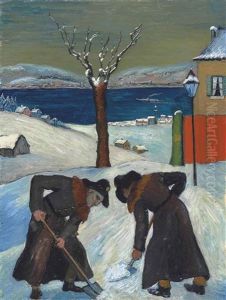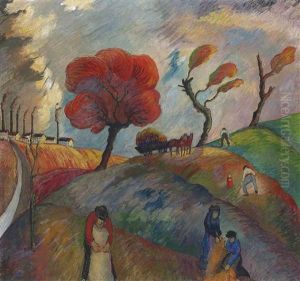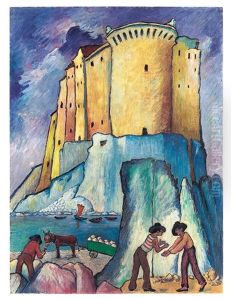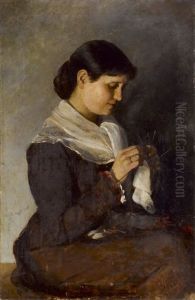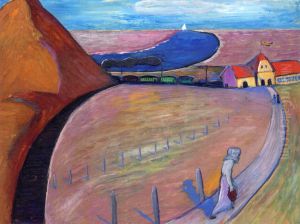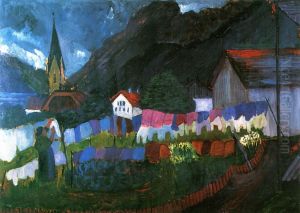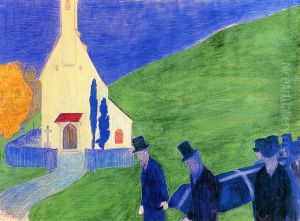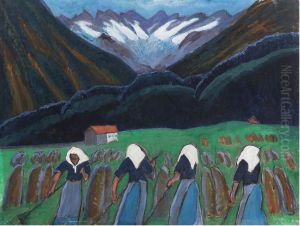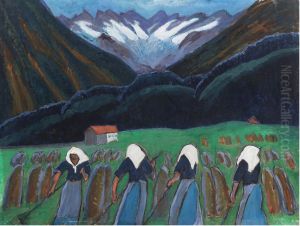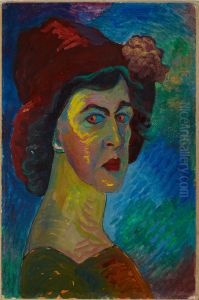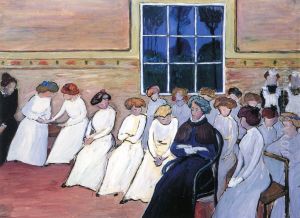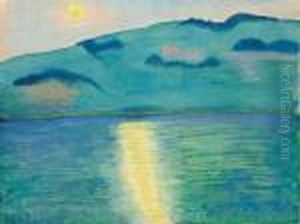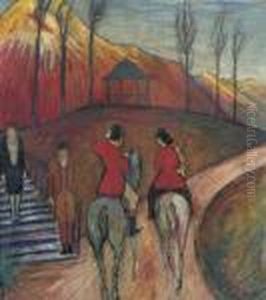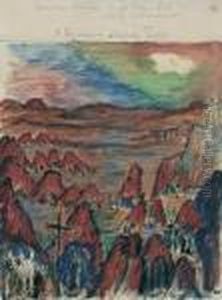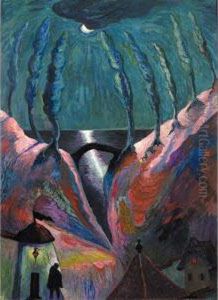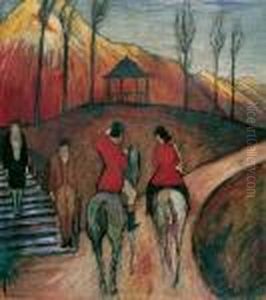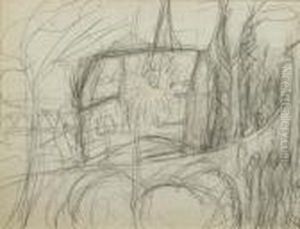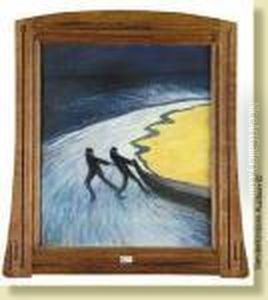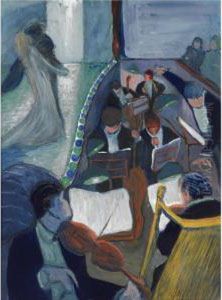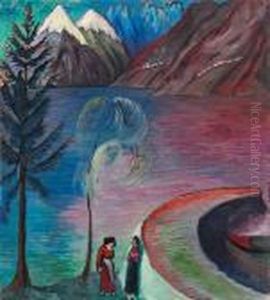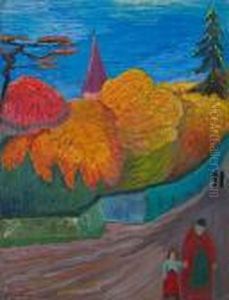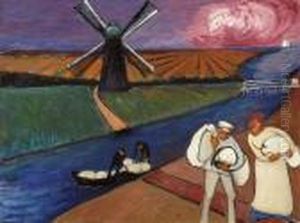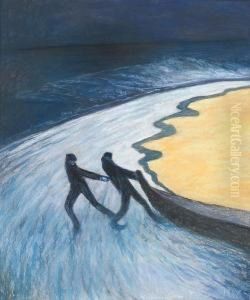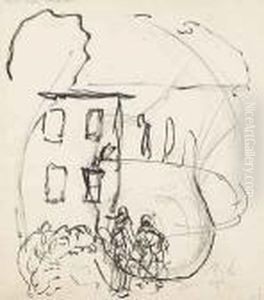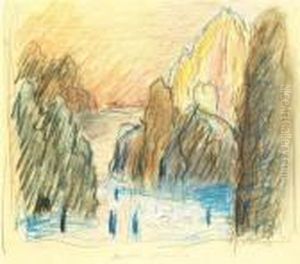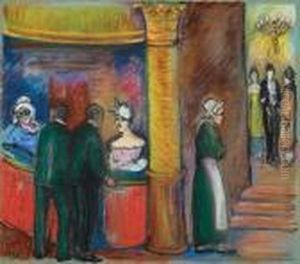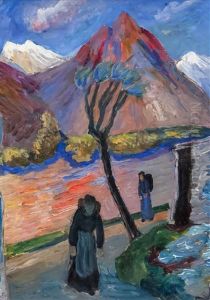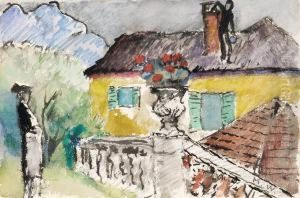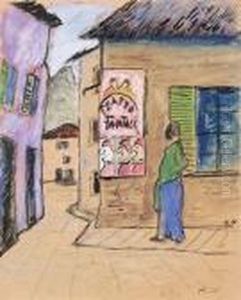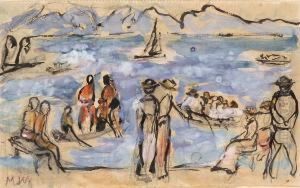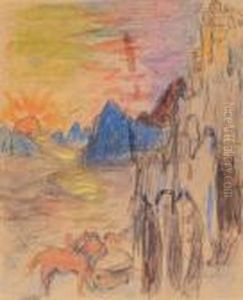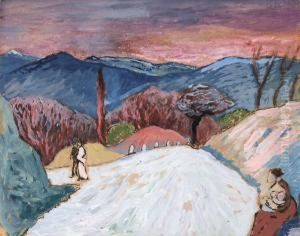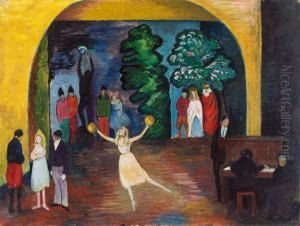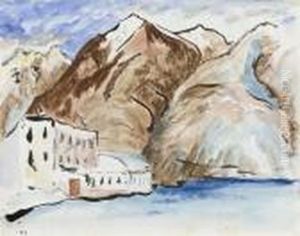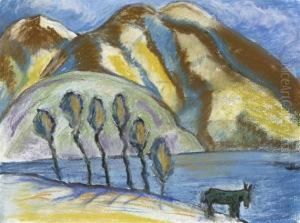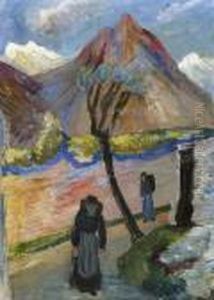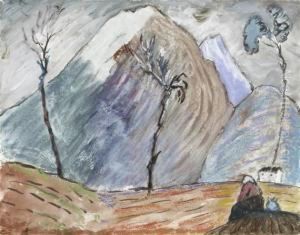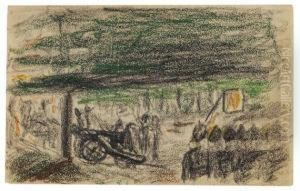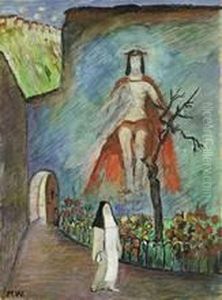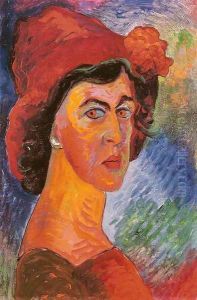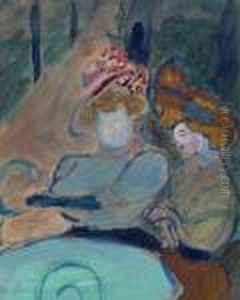Marianne von Werefkin Paintings
Marianne von Werefkin was a Russian-born expressionist painter who played a significant role in the avant-garde movement in Germany. Born on September 10, 1860, in Tula, Russia, she belonged to an aristocratic family and was exposed to art and culture from an early age. Her father was a commander of the Ekaterinburg Regiment of the Russian army, and her mother was a baroness. Werefkin started her formal art education under the guidance of Ilya Repin, the most renowned Russian realist painter of her time.
Werefkin moved to Munich in 1896, which was then a vibrant center for artistic innovation. There she became involved with the artistic group known as Der Blaue Reiter (The Blue Rider), which was co-founded by Wassily Kandinsky and Franz Marc. Although she did not exhibit with the group initially, her work was profoundly influenced by their ideas, and she contributed intellectually to the group's discussions and publications.
During her early years in Munich, Werefkin met Alexej Jawlensky, a Russian painter with whom she had a long-standing relationship. They lived and worked together for many years, and Werefkin played a significant role in Jawlensky's artistic development. For a period, Werefkin put her own painting on hold to focus on promoting Jawlensky's work and career. However, she continued to produce a vast number of drawings and sketches, developing her artistic ideas behind the scenes.
After a creative break, Werefkin returned to painting with renewed vigor around 1906. She developed a vibrant, expressionistic style characterized by bold colors and dramatic brushwork. Her subjects often included landscapes, urban scenes, and social commentaries influenced by her observations of the changes in society and the hardships of the common people.
The outbreak of World War I forced Werefkin and Jawlensky to leave Germany and move to Switzerland. During her time in Switzerland, Werefkin continued to paint and exhibit her work. Her relationship with Jawlensky gradually deteriorated, and they eventually separated.
Werefkin's work was not widely recognized during her lifetime, and she struggled to gain the same level of attention as her male contemporaries. It was only after her death in Ascona, Switzerland, on February 6, 1938, that her contribution to the expressionist movement began to be fully appreciated. Today, Marianne von Werefkin is celebrated as an important figure in European modernism, and her paintings are held in numerous collections worldwide.
